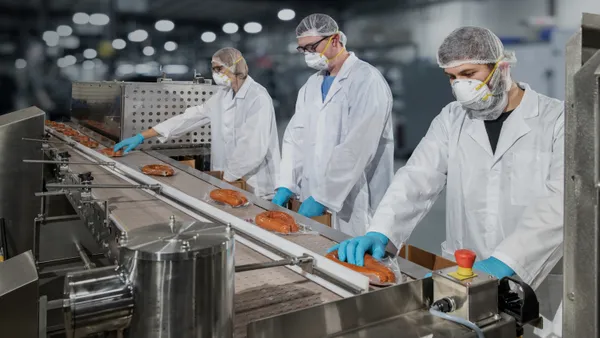Dive Brief:
- Kroger will be rolling out radio-frequency identification (RFID) inventory automation technology across fresh departments in an effort to provide workers with more frequent and accurate inventory information, according to a Tuesday press release.
- The grocer, which is working with identification technology company Avery Dennison, will first introduce the RFID system to the bakery department.
- Kroger is adopting the technology at a time when grocers have been stepping up their use of automation to prevent food waste and improve efficiency.
Dive Insight:
Like AI-powered systems, which have become more commonplace in grocers’ fresh departments, RFID technology can also provide valuable insight on inventory management to minimize food waste.
Avery Dennison’s system makes item-level digital identification possible by implementing RFID-embedded labels on goods, according to the announcement. RFID systems use radio waves to identify and track objects and allow tags placed on products to wirelessly communicate with readers without requiring a line-of-sight connection, according to Avery Dennison.
“Our work with Avery Dennison will improve inventory visibility, which means products will be on the shelves when our customers want them, while enabling our associates to spend more time with our customers,” Jordan Poff, Kroger’s vice president of retail operations, said in a statement.
In a note to investors Tuesday, Michael Roxland, senior paper and packaging analyst at Truist Securities, called this “a watershed moment” for Avery Dennison, “which is now driving wider adoption of RFID throughout the grocery store after spearheading growth in logistics, quick service restaurants, home goods, and other new verticals.”
“While Kroger is initially deploying this in the bakery, we believe there is the potential for adoptions in higher-value individual items such as protein, which may be wrapped in foil and therefore tend to be more difficult as read rates are challenging while bakery items are easier to initially deploy given the lack of complexity,” Roxland wrote.
RFID technology has also been tested in other retail situations. For example, Amazon last year began placing RFID tags on clothing and other goods sold in shops in sports arenas, allowing people to automatically pay for those items as they walk through an exit gate. Earlier this year, Walmart discontinued a test of a machine that verified purchases people made using its scan-and-go checkout solution through RFID.
















